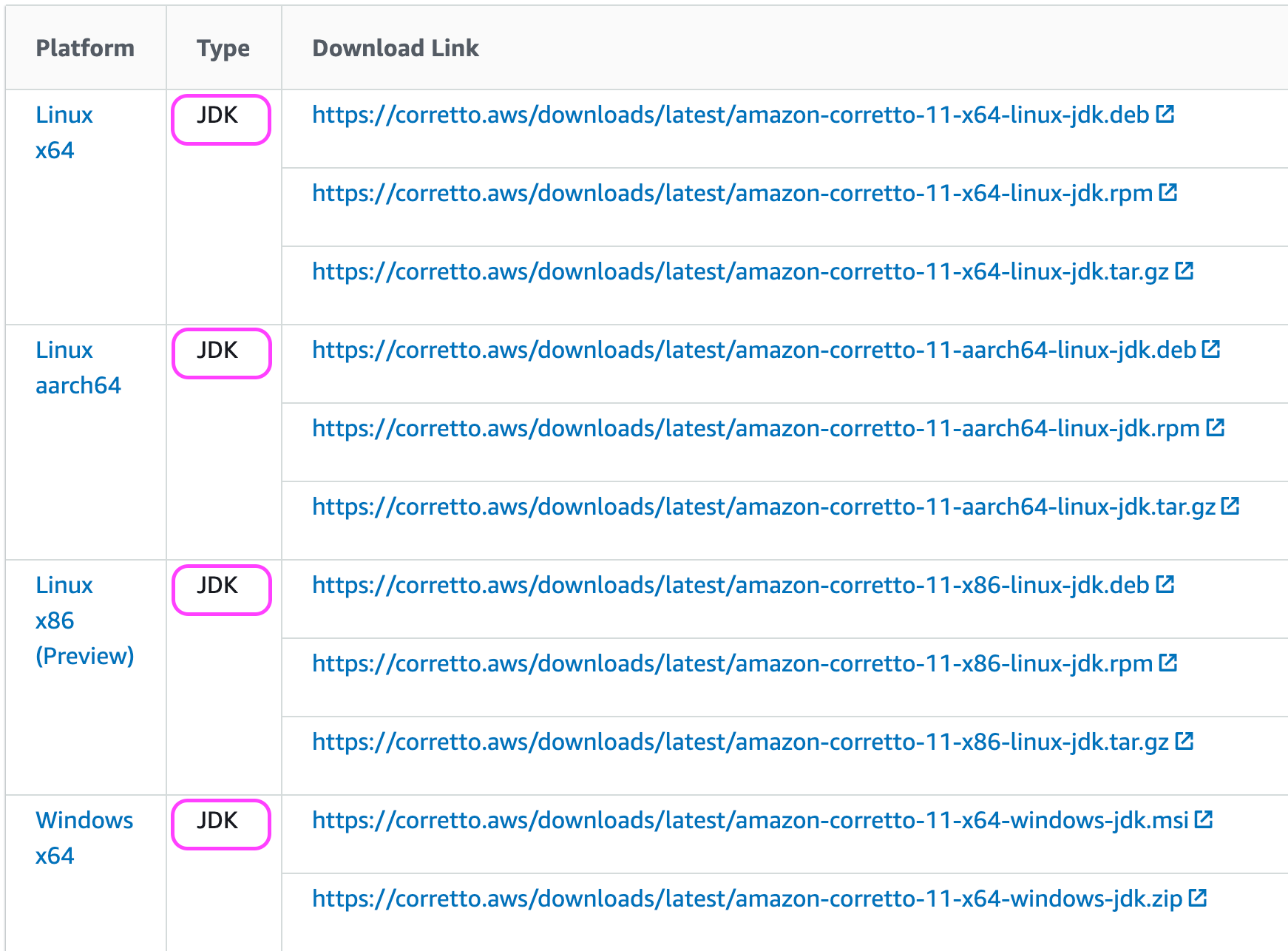

- #INSTALL OPENJDK 11 AMAZON LINUX HOW TO#
- #INSTALL OPENJDK 11 AMAZON LINUX INSTALL#
- #INSTALL OPENJDK 11 AMAZON LINUX LICENSE#
- #INSTALL OPENJDK 11 AMAZON LINUX WINDOWS#
#INSTALL OPENJDK 11 AMAZON LINUX LICENSE#
Oracle packages are available to download only from their official websiteīefore installing Oracle Java, make sure you read the Oracle JDK License In this section, we will go through the steps of installing Oracle Java.

#INSTALL OPENJDK 11 AMAZON LINUX INSTALL#
Same as above if your application requires OpenJDK 7 JRE you can install it with yum by running the following command: sudo yum install java-1.8.0-openjdk Install Oracle Java # If your application requires the older Java 8 to be installed on your CentOS 7 system, install it by running the following command: sudo yum install java-1.8.0-openjdk-devel Install OpenJDK 8 JRE # Java 8 is still the most widely-used version of Java. JRE is a subset JDK, and if you already installed the JDK package, you do not need to install this one. You can install OpenJDK 11 JRE using yum by typing the following command: sudo yum install java-11-openjdk That’s it! At this point, you should have successfully installed Java on your CentOS system. OpenJDK 64-Bit Server VM 18.9 (build 11.0.3+7-LTS, mixed mode, sharing) OpenJDK Runtime Environment 18.9 (build 11.0.3+7-LTS) The output will look something like this: openjdk version "11.0.3" LTS Verify the installation, by running the following command which will print the Java version: java -version You can install it using yum by typing the following command: sudo yum install java-11-openjdk-devel Install OpenJDK 11 JDK #Īt the time of writing, OpenJDK 11 is the current LTS version of Java and the recommended version to install. The installation is simple and straightforward.

OpenJDK, the open-source implementation of the Java Platform, is the default Java development and runtime in CentOS 7. Prerequisites #īefore starting with the tutorial, make sure you are logged in as root or user with sudo privileges If you are not sure which Java implementation and version to install, the general recommendation is to install OpenJDK 11 JDK, which is the current LTS version of Java. There are also two different implementations of Java, OpenJDK and Oracle Java, with almost no differences between them except that Oracle Java has a few additional commercial features. If you are a Java developer, then you will need JDK, which includes JRE and development/debugging tools and libraries. If you only want to run Java programs, then you can install JRE, which contains just the Java Runtime Environment. There are two different Java packages in CentOS 7, Java Runtime Environment (JRE), and the Java Development Kit (JDK). This tutorial covers the Java SE (Standard Edition) edition. Java is distributed in three different editions, Standard Edition (SE), Enterprise Edition (EE), and Micro Edition (ME). Prerequisites #īefore continuing with this tutorial, make sure you are logged in as a user with sudo privileges
#INSTALL OPENJDK 11 AMAZON LINUX HOW TO#
We’ll show you how to install OpenJDK as well as Oracle Java. This tutorial describes how to install various versions and implementations of Java on CentOS 7.
#INSTALL OPENJDK 11 AMAZON LINUX WINDOWS#
This enables Jar files to be run from within Windows Explorer.Ĭontains files that are installed in the \missioncontrol directory.Īppends \missioncontrol to the system PATH environment variable.Java is one of the most popular programming languages in the world, used to build different kinds of applications and systems. REDHAT_JAVA_HOME can be used by some programs to find the Red Hat OpenJDK runtime. OpenJDK Runtime - REDHAT_JAVA_HOME System Variable JAVA_HOME is used by some programs to find the Java runtime. OpenJDK Runtime - JAVA_HOME System Variable The following registry keys are set HKLM\Software\JavaSoft\JDK\, entries: JavaHome: RuntimeLib: \bin\server\jvm.dll HKLM\Software\JavaSoft\JDK, entries: CurrentVersion: Īdds the Runtime to the Path variable so it is available from the command line.


 0 kommentar(er)
0 kommentar(er)
